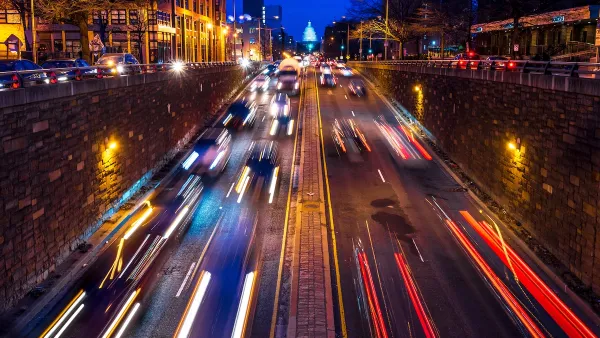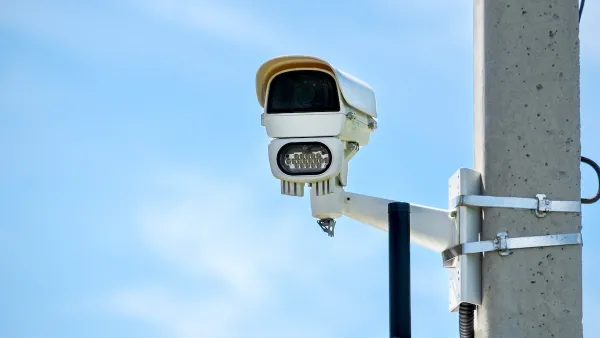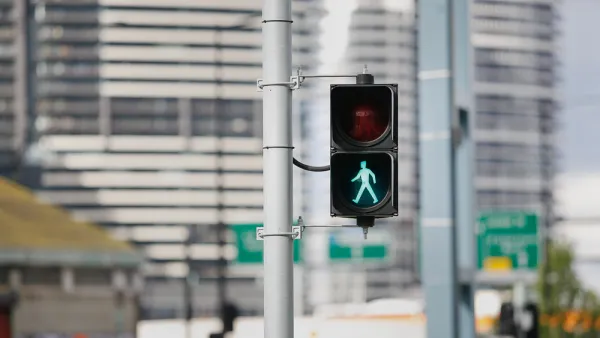A new study finds that as travel speed increases, so too does the likelihood that drivers will fail to yield to pedestrians crossing legally with the right-of-way.
Chris McCahill shares news of a new study published by the Transportation Research Board finding that "drivers traveling at higher speeds are also far less likely to yield to pedestrians in crosswalks." Specifically, the study found that "drivers are nearly four times more likely to yield for pedestrians at travel speeds around 20 miles per hour than at 40 mph."
The study's authors, Tomas Bertulis and Daniel M. Dulaski, observed 100 crossings at nine marked crosswalks, dividing each of them into three groups based on the typical speed of drivers on the road. According to McCahill's explanation of the study: "At 20 mph, roughly 75 percent of drivers slowed enough to let pedestrians cross. That rate dropped to around 40 percent at 30 mph and less than 20 percent as speeds approached 40 mph. The researchers also found that for eight of the sites (excluding the only four-lane street), travel speeds explained 99 percent of the variation in yield rates."
Both McCahill and the study's abstract point out that the study offers ammunition for planners, engineers, and local residents looking to bolster arguments in favor of more stringent speed controls.
Hat tip to Angie Schmitt for sharing the news about the study.
FULL STORY: Drivers more likely to ignore crosswalks at speeds above 30 mph

National Parks Layoffs Will Cause Communities to Lose Billions
Thousands of essential park workers were laid off this week, just before the busy spring break season.

Retro-silient?: America’s First “Eco-burb,” The Woodlands Turns 50
A master-planned community north of Houston offers lessons on green infrastructure and resilient design, but falls short of its founder’s lofty affordability and walkability goals.

Delivering for America Plan Will Downgrade Mail Service in at Least 49.5 Percent of Zip Codes
Republican and Democrat lawmakers criticize the plan for its disproportionate negative impact on rural communities.

Test News Post 1
This is a summary

Test News Headline 46
Test for the image on the front page.

Balancing Bombs and Butterflies: How the National Guard Protects a Rare Species
The National Guard at Fort Indiantown Gap uses GIS technology and land management strategies to balance military training with conservation efforts, ensuring the survival of the rare eastern regal fritillary butterfly.
Urban Design for Planners 1: Software Tools
This six-course series explores essential urban design concepts using open source software and equips planners with the tools they need to participate fully in the urban design process.
Planning for Universal Design
Learn the tools for implementing Universal Design in planning regulations.
EMC Planning Group, Inc.
Planetizen
Planetizen
Mpact (formerly Rail~Volution)
Great Falls Development Authority, Inc.
HUDs Office of Policy Development and Research
NYU Wagner Graduate School of Public Service





























